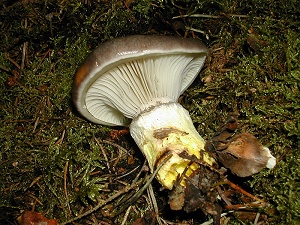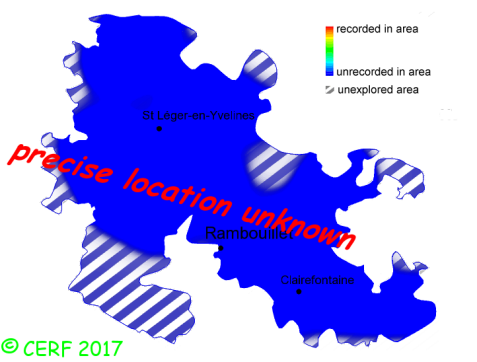| Gomphidius glutinosus (Schaeff.:Fr.) Fr. |
|
|
|
|
|
|
The cap is chocolate brown to grey violaceous. The cap surface is smooth, viscid or sticky. The stem is white, scaly, yellow towards base, with a ring zone (cortina remains). The flesh is white, bright yellow in stem base, brown under the cap surface, turning slowly red when exposed to air; its taste is mild; the odour is pleasant; its texture is fibrous. The gills are white then ash grey then blackish, decurrent, distant . The spore print is brown to black. This species is mycorrhizal. It grows on the ground, on a rather slightly acid soil, with spruce, fir. The fruiting period takes place from July to November.
Distinctive features : slimy cap and stem; yellow stem base; thick and distant gills, easily separated from cap Gomphidius glutinosus is rare and confined in the forest of Rambouillet, and is occasional, more generally speaking . | ||
|
page updated on 14/01/18

